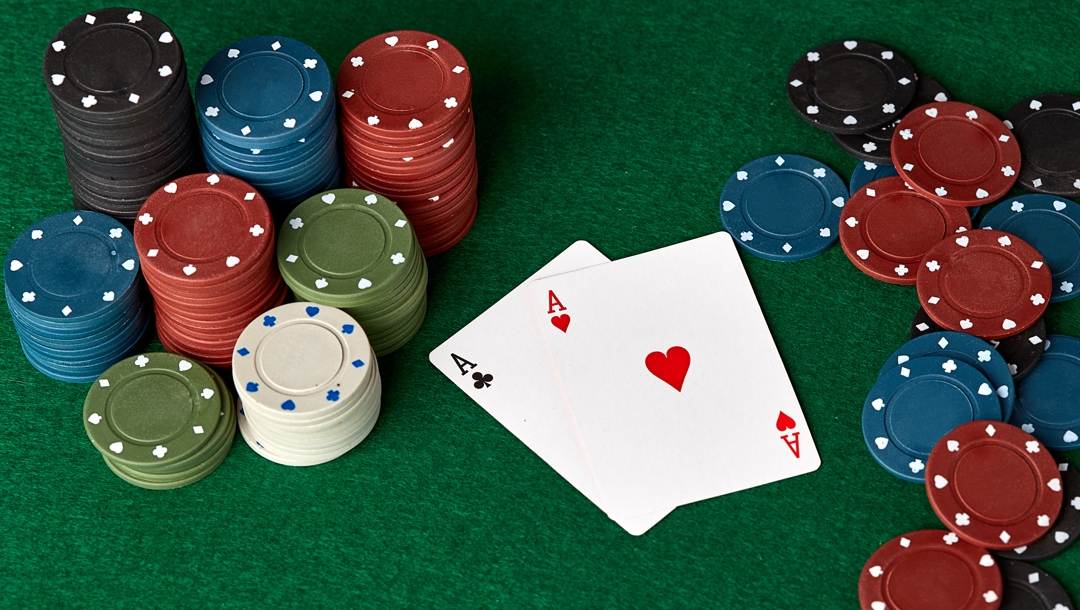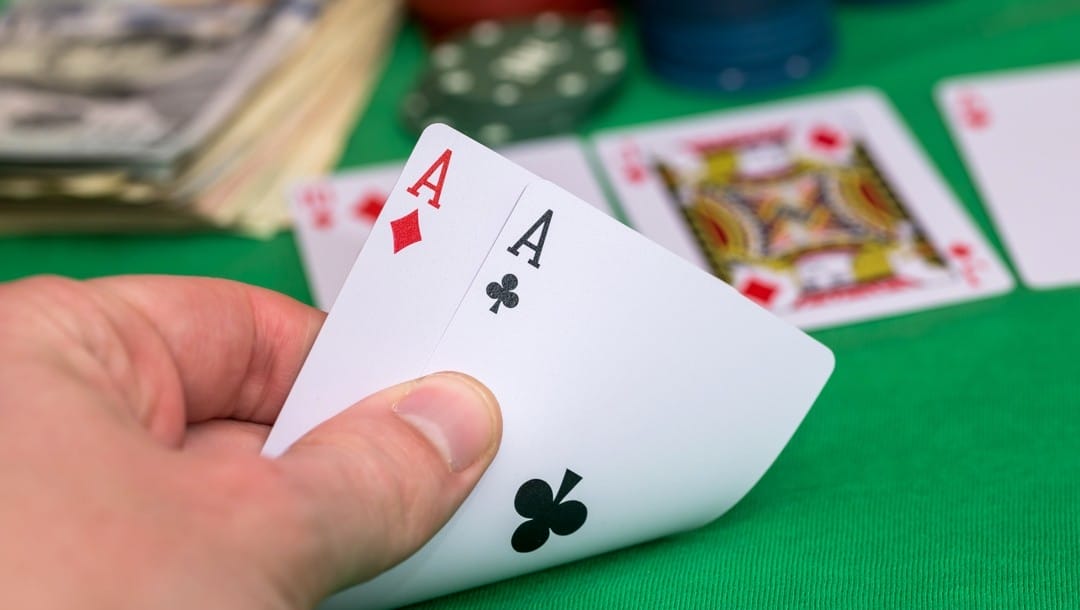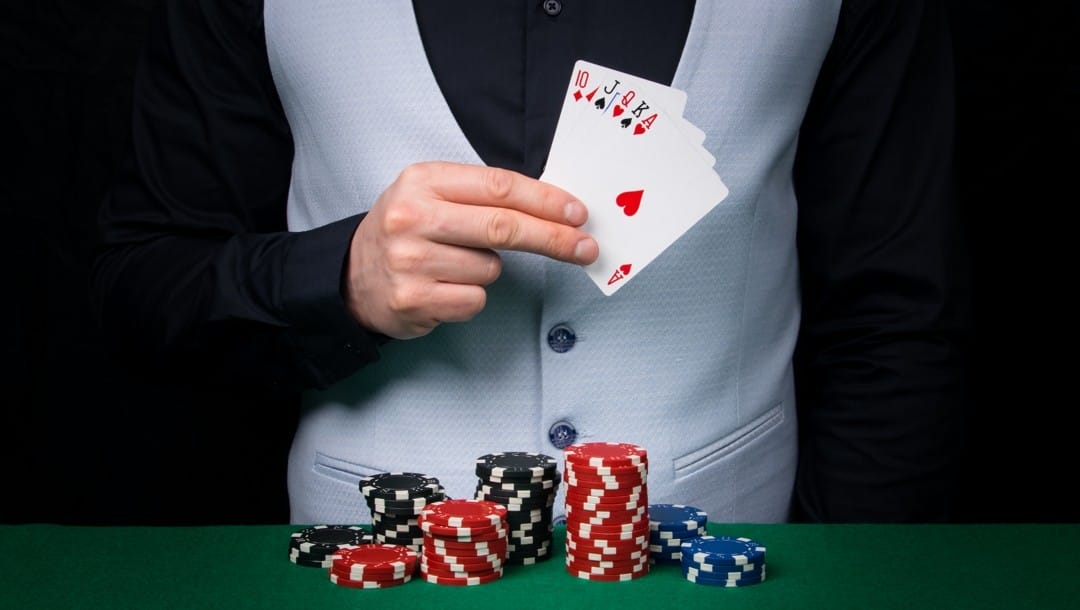Calculating the bubble factor in poker is crucial for understanding tournament equity. Learn more about the calculation process, categories and uses.
What Is the “Bubble Factor” in Poker?

The bubble factor in poker is a measure of tournament equity. It’s a formula that compares your odds in chips against your odds in dollars. It also takes into account the ratio of chips won to chips lost and is expressed in terms of overall equity for any given betting decision.
Bubble play only applies to poker tournaments and not to regular poker games online. For example, if you participate in a tournament in which the top 10 players win money but there are 25 competing players, then there are 15 players playing the bubble. That number diminishes as players get eliminated, to the point where the bubble factor eventually reaches a flat ratio of 1.
For a bubble to exist, there has to be at least one player who walks away with zero winnings. So, when there’s only one winner, the bubble lasts until the tournament’s final round. The bubble factor is one of the more complicated poker concepts for novices to grasp and generally requires some serious use of poker IQ to figure out. The first thing you need to know is how to calculate this factor.
Calculating Bubble Factor
Bubble factor is the equity you lose for an all-in compared to the equity you gain. Suppose your equity before a hand is $100. You go all-in against another player for a pot of $140, but a loss will leave you with a remainder of $50 equity. Depending on the outcome of the round, you can either lose $50 or win $40. Dividing potential losses ($50) by prospective gains ($40) leaves you with a bubble factor of 1.25:1.
The lower your bubble factor, the stronger your position at the table becomes. The formula for calculating bubble factor can be expressed as follows:
- (initial equity – value lost)/(value won – initial equity)
One of the best tournament poker tips for beginners is to gain a firm grasp of equity, otherwise known as expected value (EV.) In poker tournaments with more than one payout, an independent chip model (ICM) is essential for accurate odds analysis. EV is the main component you’ll need for ICM calculations.
ICM and bubble factor are often used interchangeably, but the key difference is that bubble factor uses ICM theory. ICM was the first model to express chip stack size in relation to prize money, leading to the creation of the bubble factor.
Categories of Bubble Play

Bubble play in poker takes advantage of low and high bubbles. Your bubble factor should always be considered in relation to that of your opponent, which leads to four possible scenarios in which the bubble factor can be used:
- Low bubble vs. high bubble
- High bubble vs. low bubble
- High bubble vs. high bubble
- Low bubble vs. low bubble
As a general rule, a low bubble allows you to play aggressively against a high one. Conversely, playing a high bubble against a low bubble warrants caution, as the player with the low bubble has the better equity ratio (or EV.) When bubble factors are the same, both players have to approach betting carefully because of their similar equity positions.
The bigger an opponent’s bubble factor is compared to yours, the more pressure you can apply. The player with the largest bubble stands to lose the most equity, while a smaller bubble provides a wider range against pushes.
Poker tips always point to stack size as a major influence for betting decisions. Bubble players will take stack strategies a step further by allowing players to substitute chip value for dollar value. This ensures the broader picture is kept in mind at all times, making every potential elimination easier to avoid.
How To Use Bubble Factor

There are two types of bubble players: those who focus on survival and those who focus on winning. These players can be found in any tournament format, whether you’re playing poker online or at a real table. Knowing the strategies used by these players will give you an advantage over them, provided you keep a close eye on your own shifting equity.
Bubble players who focus on survival avoid high-risk bets. They rarely bluff, call only when they have a good hand and fold for everything else. Eliminating these players requires strong hands and strategic pushes.
For win-focused players, the chief aim is to apply pressure as often as possible, using a lower bubble factor as leverage for contested pots. These players use every opportunity they can, meaning they can be countered by tight play and calculated risks.
In some cases, you can use the bubble factor to exert pressure even if your hand has low odds of winning. If you can attain a large stack towards the end of the bubble phase, you have the ability to create opportunities for yourself, forcing low-stack players to either call your bets or continue losing blinds.
Top Tips for Effective Bubble Play
Assess Your Stack
Evaluate your chip stack in relation to the blinds and antes. If you have a comfortable stack, avoid unnecessary risks. If you have a short stack, be prepared to take more aggressive actions.
Identify Tight Opponents
Look for players who are playing cautiously and trying to survive the bubble. Exploit their tight play by putting pressure on them with well-timed raises and re-raises.
Exploit Loose Opponents
Take advantage of loose players who are playing too many hands. Use their willingness to call or gamble to accumulate chips by making strong, value-based hands.
Adjust Your Ranges
Adapt your hand selection based on the bubble dynamics. Tighten your range when facing aggressive opponents and widen it when facing tight opponents who are folding too often.
Pay Attention To Position
Position becomes even more crucial on the bubble. Use your position to your advantage by stealing blinds and antes from late position and putting pressure on players acting before you.
Take Advantage of Bubble Pressure
Understand that many players are risk-averse during this stage. Use this knowledge to steal pots and accumulate chips with well-timed bluffs and semi-bluffs.
Play Conservatively With Medium Stacks
If you have a medium stack, exercise caution and avoid getting involved in marginal situations. Focus on survival and look for opportunities to capitalize on mistakes made by shorter stacks.
Consider ICM
Understand the ICM implications when making decisions. The value of chips changes as the tournament progresses. It’s essential to factor in the payout structure when determining the risk-reward ratio.
Pay Attention to Table Dynamics
Observe how other players are reacting to the bubble pressure. Identify their tendencies and use this information to exploit their weaknesses or avoid confrontations with stronger opponents.
Stay Mentally Focused
The bubble can be a nerve-wracking stage in a tournament. Stay calm, focused and patient. Avoid making rash decisions based on emotions, as this can lead to costly mistakes.
Master the Bubble Factor With BetMGM
Smart bubble play in poker can be challenging, especially for new players. It takes time and experience to learn how to make it through the bubble phase — and mistakes or bad bets are always possible. For this tactic to work in your favor, it needs to be a factor in every decision you make at the poker table.
Register with BetMGM to play all the best poker online games and gain the confidence you need to head into online poker tournaments as a formidable player.


